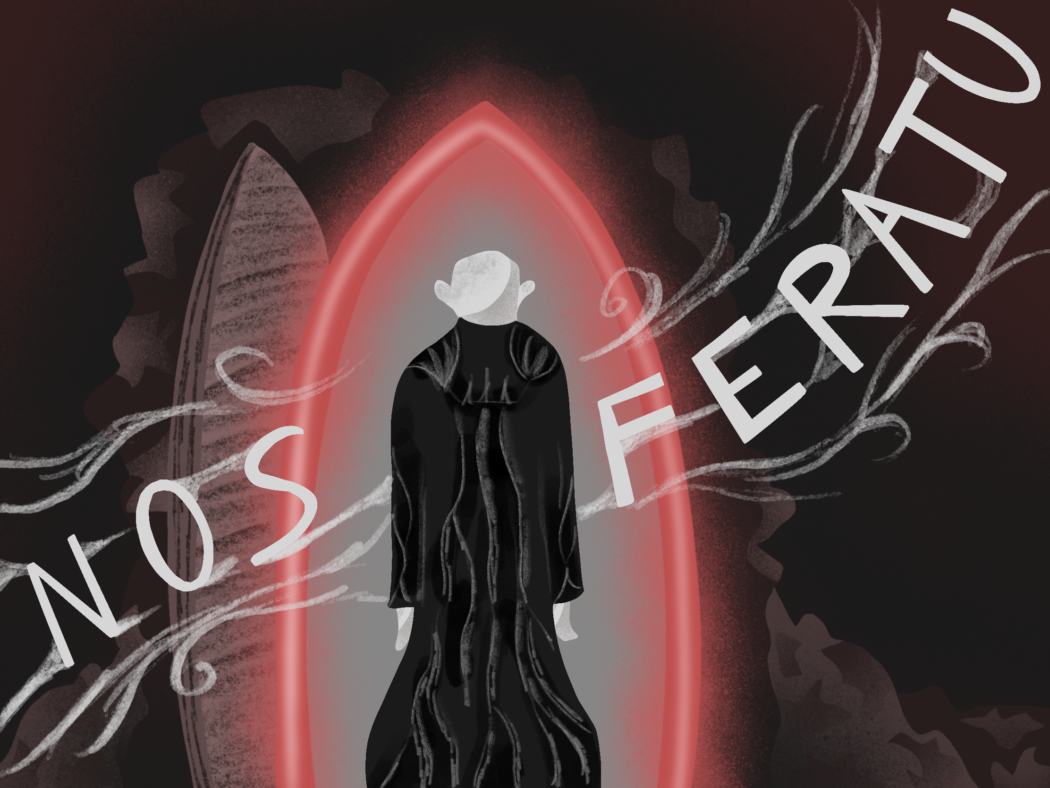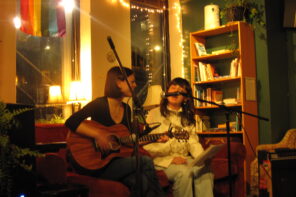Even when it was ‘silent,’ cinema has never been quiet. From its earliest years, screenings were accompanied by the live musical performances of a pianist, band, or orchestra. Filling the theatre with the drama of sound, the music also masked the loud, rhythmic clicking of the projector reel. Josh Frank’s innovative new project ‘Silents Synced’ is the latest entry in cinema’s history of staging the relationship between sound and image. A fresh take on the artistry of dubbing, ‘Silents Synced’ releases a restored new silent film set to a different alternative rock band every four months. Frank, the owner of a Texas drive-in theatre, is licensing his collection exclusively to independent cinemas and drive-ins, billing it as a love letter to the golden age of a now-embattled industry. He hopes that by harnessing rock aficionados’ zeal for album playthroughs, ‘Silents Synced’ will bring renewed attention to the forgotten gems of silent cinema and breathe new life into the drive-in’s “midnight movie” tradition. The first installment, Nosferatu X Radiohead, features F.W. Murnau’s gothic Vampire horror Nosferatu: A Symphony of Horror to Radiohead’s Amnesia and Kid A. It opened in Montreal on October 4th to a sold-out screening at Cinema du Parc and will be followed by Buster Keaton’s Sherlock Jr. to music by R.E.M in February 2025. Despite its intriguing premise, Nosferatu X Radiohead does not quite reach the revolutionary heights promised by its tireless marketing campaign. While I did thoroughly enjoy watching Nosferatu: A Symphony of Horror and took great pleasure in listening to Kid A and Amnesia (and, naturally, I had a great time doing both at once), I was ultimately underwhelmed by the limited effect of their synchronization on the big screen.
My experience of Nosferatu X Radiohead was singular, entertaining, and ultimately ambivalent.
Between the long line that wrapped the central staircase of the Galleries du Parc, a less-than-ideal seat from which I craned my aching neck upwards and the endless assault on my eardrums (I’m convinced the volume level was targeting the geriatric), my experience of Nosferatu X Radiohead was singular, entertaining, and ultimately ambivalent. As the Transylvanian vampire sowed fear and chaos in a small German hamlet, Thom Yorke moaned and whined his way through hauntingly beautiful refrains to a rhythm by turns electronic and balladic. It felt a little like being subjected to my eccentric friend’s latest idea of a fun Friday night, sitting in their basement as they avidly set up their speakers and projector, expectantly scouring my expression for approval. That is to say, it was almost good, and I was never allowed to forget just how special the experience was.
To be sure, several moments of the franken-film shined. For instance, as Amnesia trickles out with its final track, “Life in a Glasshouse,” the town’s raving lunatic gleefully warns of Nosferatu’s impending arrival. The song’s jazzy trumpet refrains circle like a loopy series of desperate questions heralding the chaos to come. Yorke’s insisting lyrics, “once again we are hungry for a lynching,” and “well of course I’d like to sit around and chat / but someone’s listening in” augment the scene’s paranoia and gestures towards the more modern horrors of mob violence and surveillance. There was also the perfect punctuation of “Morning Bell/Amnesiac” to the protagonist’s unknowing exposure of his minor wound to the bloodsucking monster. “Release me, release me” drones the Yorke, singing out lines like “where’d you park the car,” and “cut the kids in half,” whose charming incongruity with the filmic story added to the scene’s sense of dislocation. And the wistfulness of the final two tracks, “Motion Picture Soundtrack” and “Untitled,” joined seamlessly with the waning relief of the film’s denouement. Overall, Radiohead’s tugging melodies do pump new life into the admittedly slow movements of the original film. Nosferatu himself also takes on a grander villainy when lurking to a more urgent beat, and the film’s expression of cultural anxieties around immigration and contagion finds prescient footing almost a hundred years later when bridged by a contemporary intermediary.
The significant limitations of these creative choices make evaluating his hybrid film surprisingly difficult.
But most of what I find compelling about Frank’s film is ultimately attributable to either Radiohead’s or F.W. Murnau’s original creation. This is not a review of Nosferatu (1922), nor is it one of Radiohead’s fourth and fifth studio albums—needless to say, each is excellent in its own right. In question are the effects of Frank’s directorial work and whether it adds or creates value in interesting ways. Yet the significant limitations of these creative choices make evaluating his hybrid film surprisingly difficult. From my understanding, Frank’s contributions included 1) the choice of the film and albums, 2) the alignment of certain shots with certain sonic events, and 3) the addition of multicoloured neon drop shadows around certain key characters or objects. To the first point, Frank has said that he matched the two because of their similar runtime, atmosphere, and opening bell ringing—and I think it was a judicious choice. But the fact that the tracks were pre-set to play in their original order makes me question which ‘synced’ moments were deliberate and which were accidental. As I grew suspicious that most were (in fact, had to be) the latter, it was impossible to stay blind to the syncing’s rough edges. The transition between the first and second songs, for example, was an awkward one, dipping into silence and re-emerging bashfully while the events on the screen played on. That this occurred so soon in the film’s run time makes it a very shaky first step—and it wasn’t the only stumbling point. As I understand it, the neon-coloured object-halos were meant to compensate for this difficulty in making deliberate emphasis since the dictates of Frank’s project leave little room for visual intervention. For this reason, they felt lazy and provisional in their relative simplicity.
My chief complaint is that, bookended by clips of the creator addressing the camera from his home office, Nosferatu X Radiohead makes a big deal of itself. Frank waxes poetic about the grave importance of independent theatres in a time of increasing conglomeration, pandemic woes, and the scourge posed by streaming services (he also wouldn’t stop reminding us where we could buy our posters, merchandise, and ‘souvenir tickets’). None of these concerns are illegitimate. In fact, I share them all. More than that, his project succeeded. People really did flock to see a silent film merged with alt-rock.
I still recommend the film to those interested or those anticipating Robert Eggers’ remake of Nosferatu coming this Christmas. Unfortunately, for what few effects were added by the intervention of ‘Silents Synced’, I found myself wondering what exactly made this experience so different from something my eccentric friend would (and easily could!) set up themselves in their basement. Perhaps what Josh Frank and my hypothetical friend have in common—that is, the contagious enthusiasm of hobbyist film fanatics—overrides any complaints of their technical clumsiness. After all, what is missing from most high-budget blockbusters offered today is precisely what Nosferatu X Radiohead and its keen movie-going public has in spades—an authentic, if imperfect, passion for the possibilities of artistic experimentation without any guarantee of commercial success.








